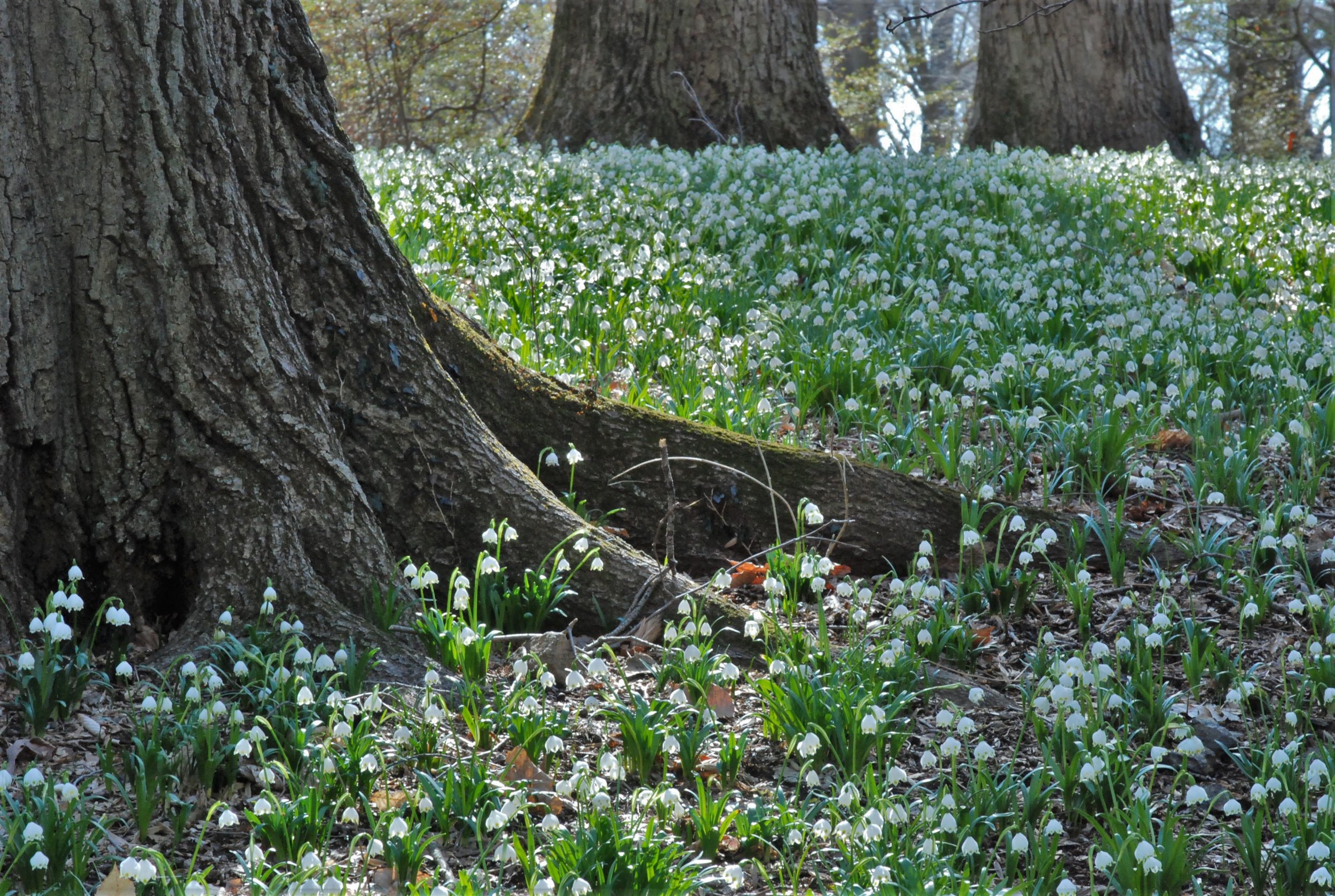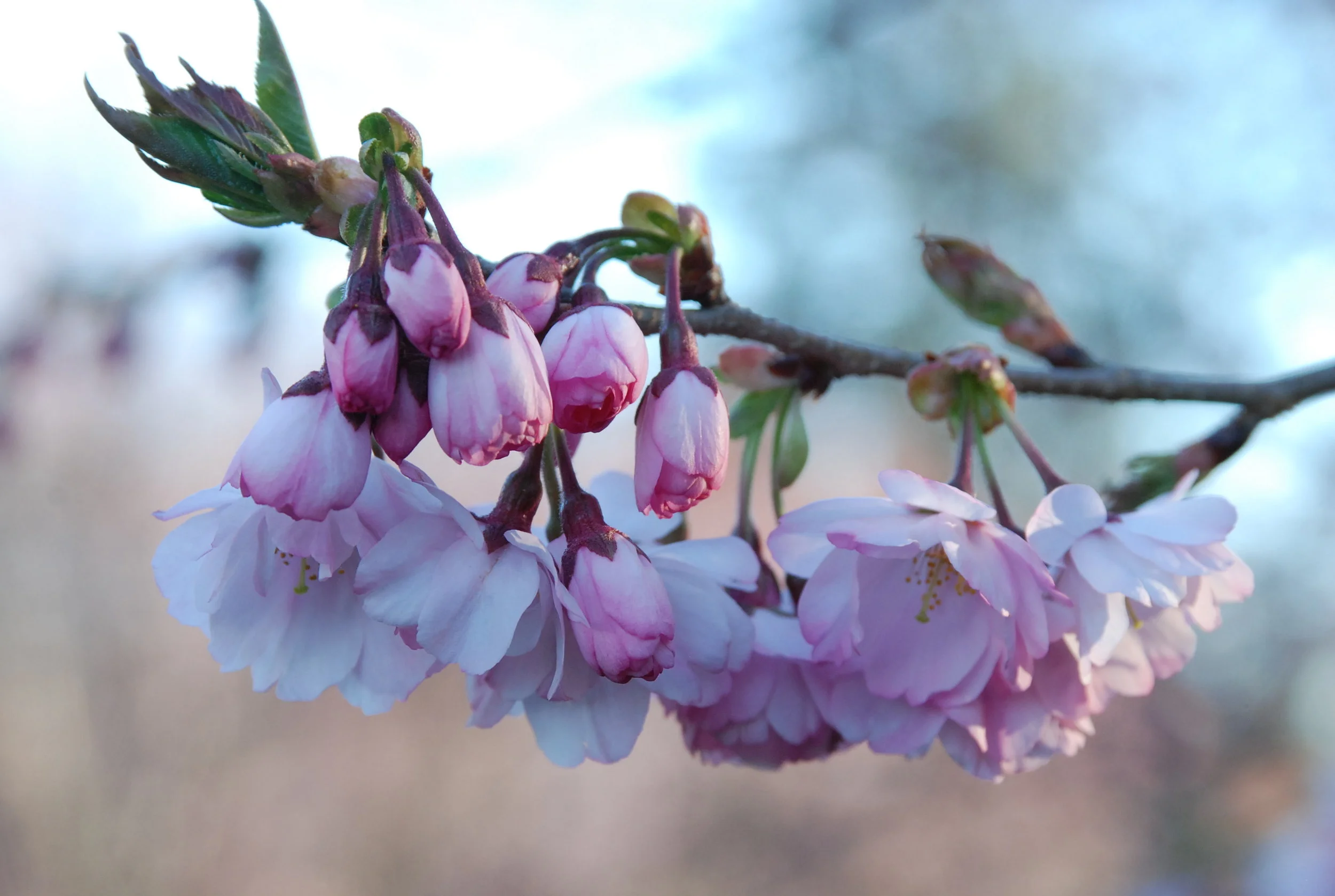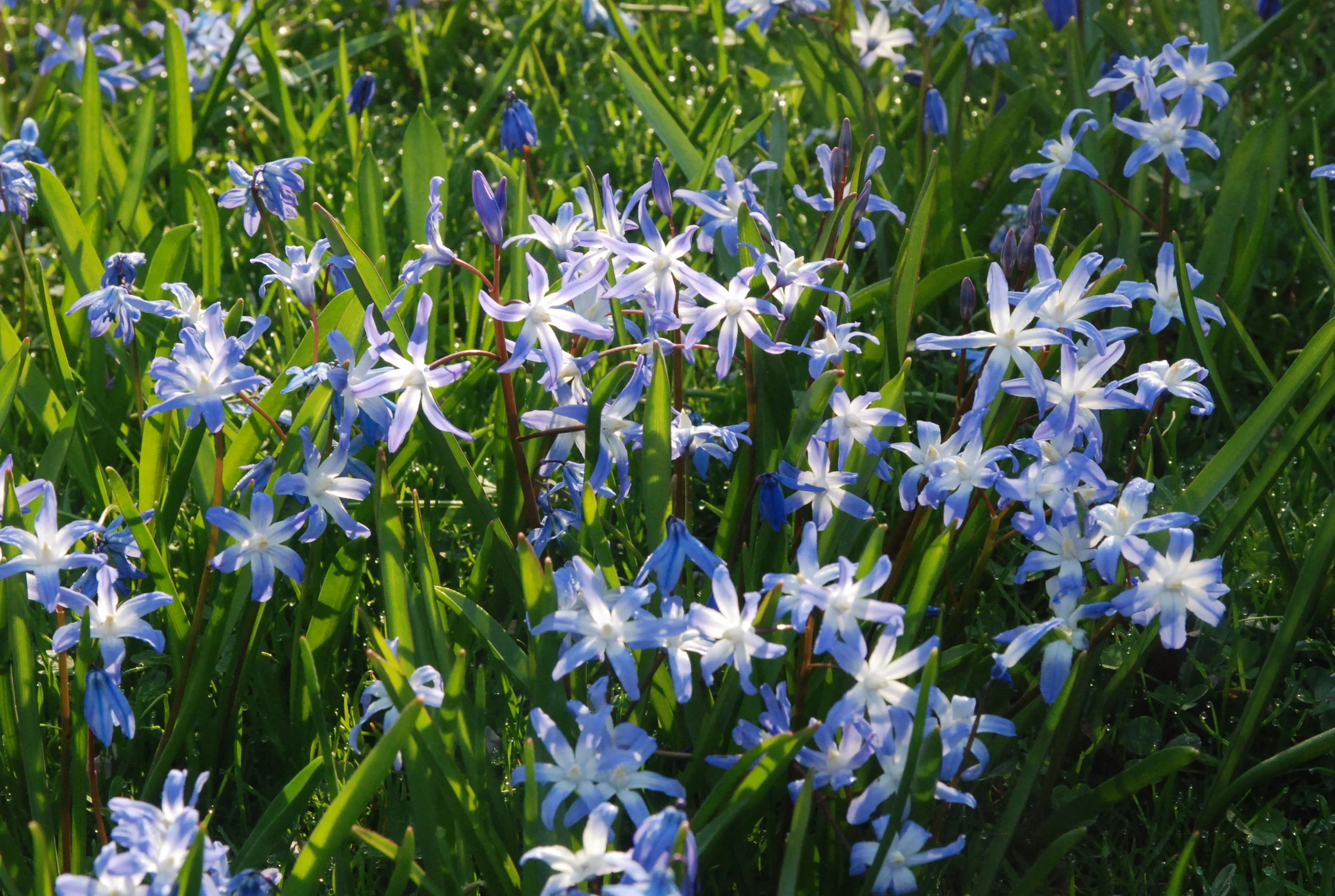Spring Snowflakes
If permitted only to have two early-spring flowering bulbs, I would have picked Galanthus elwesii (the giant snowdrop) and Leucojum vernum (spring snowflake). When their flowers are backlit, they glisten with crystalline clarity like pearl earrings. The fragrance wafted on warm days are an olfactory delight in a season of paltry floral offerings. I sometimes like to cut the flowers, bringing them inside for closer study. The green markings on the white petals feel clean and modern. Their pure colors have inspired the other common name St. Agnes’s flower after the patron saint of young virgins.
Elizabeth Lawrence writes lovingly of the spring snowflake, having received her bulbs from Mr. Krippendorf, kindred spirit whose love of bulbs were reflected in the book. Prior to Mr. Krippendorf’s gift, she had trouble procuring the real species, which ended up being Leucojum aestivum. Lawrence found much to admire: “The thin, polished leaves come with the flowers but develop more slowly. They are curved in a way that repeats the hooked flower pedicle in a delightful and characteristic rhythm.”
Two varieties are recognized: the western Leucojum vernum var. vernum, with its green markings, and the eastern Leucojum vernum var. carpathicum with yellow tips. Because the populations of these varieties do overlap, sometimes the traits can intergrade. Like snowdrops, spring snowflakes have spawned named variants. Some have double flowers, two flowers per scape, large flowers, and distinctive markings.
I prefer Leucojum vernum over the other species L. aestivum (the summer snowflake). The foliage of Leucojum aestivum appears in late fall (November), making it reliable to cold damage, an effect more apparent in spring when the browned tips look unsightly at full height. In addition, it takes significant real estate in proportion to the flowers. Leucojum aestivum can soon colonize damp stream sides and wetland habitats outside of its native origins in Europe. In Delaware, clumps were removed since they were competing with the native wildflowers.
Leucojum vernum is rarely offered in bulb catalogs since its bulbs resent dry storage and deteriorate when removed from the soil. Some people propagate them from seed as they do with winter aconites (Eranthis hyemalis), although seedlings take a few years to flower. For those impatient, the easiest way to obtain Leucojum vernum is to beg or ask for some bulbs as Elizabeth Lawrence herself did from Mr. Krippendorf.
Gardening with minimal intervention at its best: Leucojum vernum naturalizing at the March Bank, Winterthur, DE.
Those who live within the Philadelphia region can visit old gardens where the former owners had the foresight to plant them, allowing nature to take care of the process. At Winterthur, Henry Francis Du Pont planted Leucojum vernum, which has naturalized happily under the dappled shade of beech and tulip polar trees. Thousands of bulbs have proliferated with crocuses, daffodils, and scillas in a majestic spring display inspired by the Irish gardener William Robinson’s The Wild Garden. Closer to Philadelphia is the Wister Garden in Swarthmore where a wooded valley has nurtured Leucojum vernum with snowdrops and winter aconites.
The entire woodland floor at the March Bank, Winterthur, DE, is carpeted with Leucojum vernum during early spring. Imagine thousands of flowers tinkering in the breezes and just scenting the warm air.









